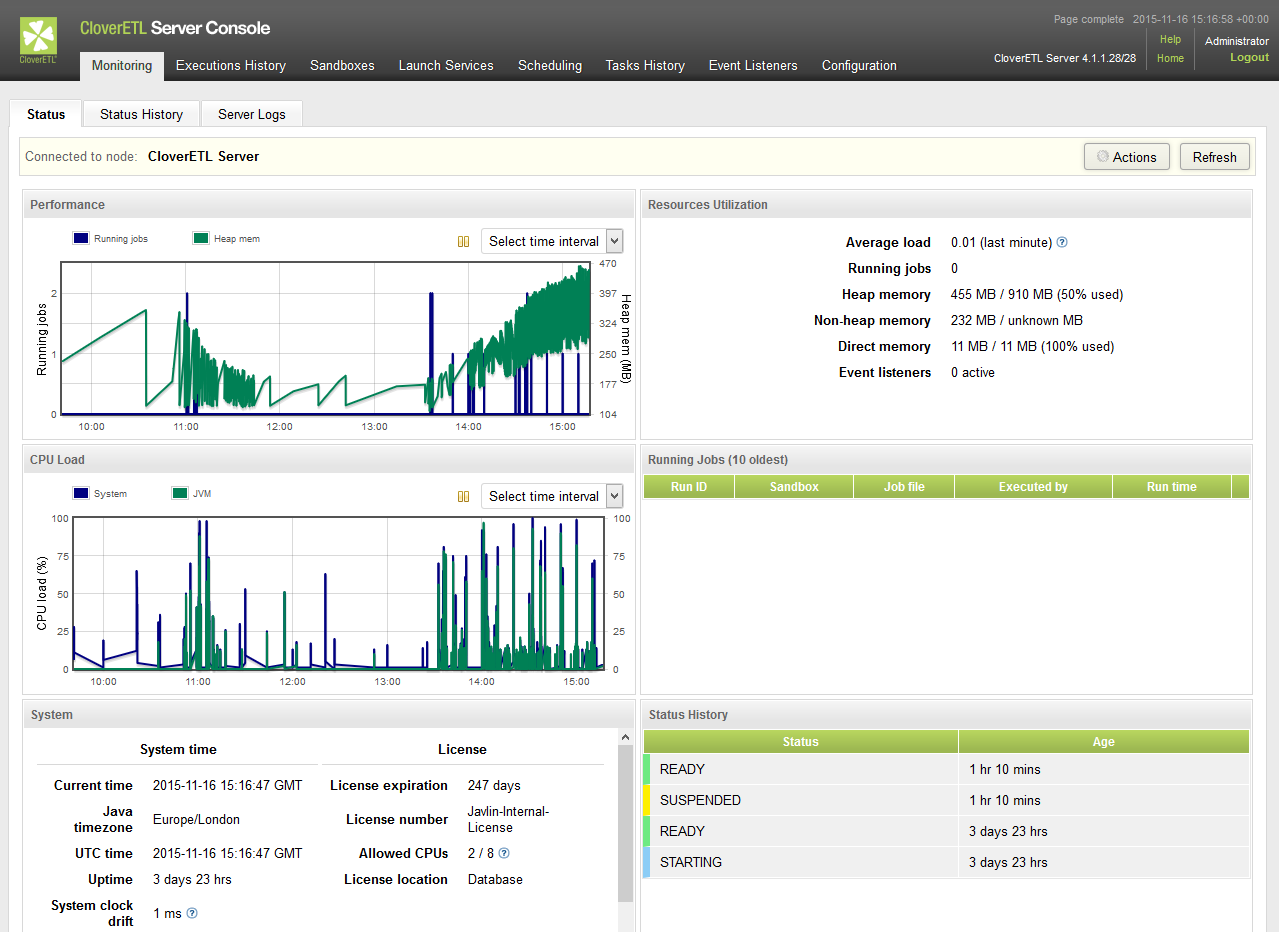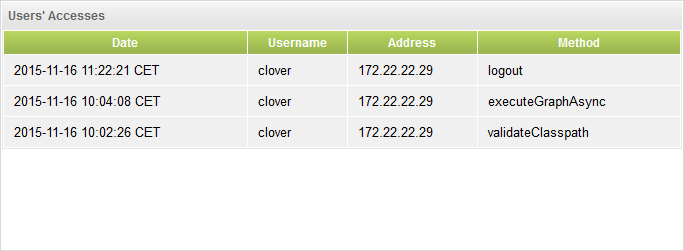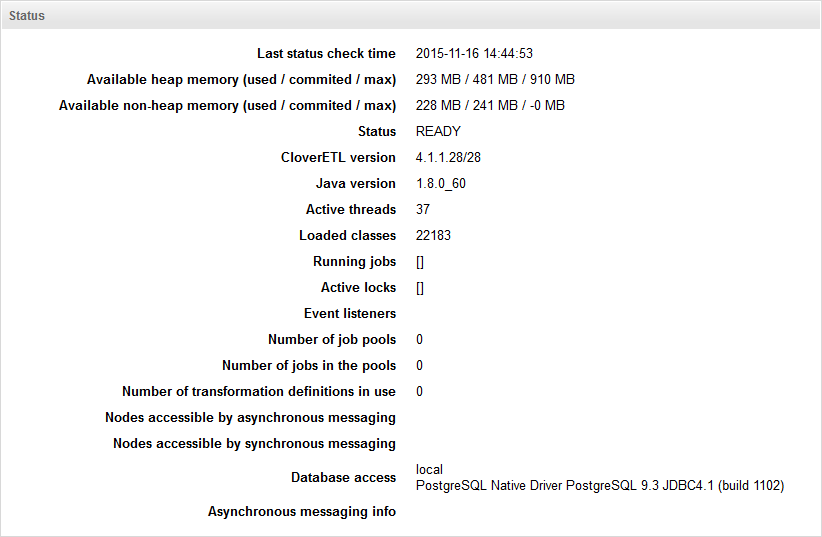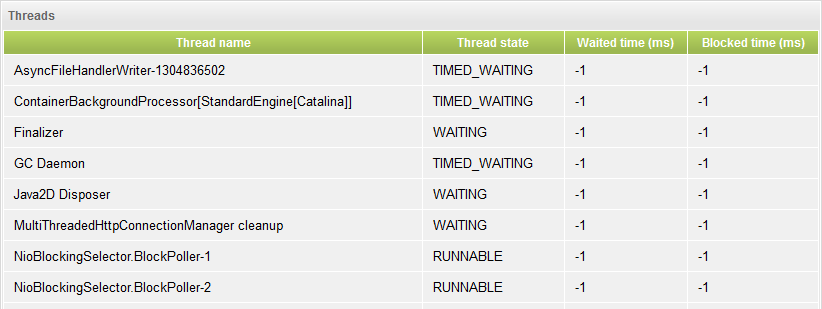Standalone Server Detail
Standalone server detail view displays info collected from the standalone server. The info is grouped in several panels. The following ones are displayed by default.
Performance
Resource utilization
10 longest-running jobs
System
Status history
You can display the hidden actions with Actions button: choose → .
 |
Figure 16.1. Standalone server detail
Performance
The Performance panel contains a chart with two basic performance statistics: a number of running jobs and an amount of used heap memory. The graph displays values gathered within a specific interval. The interval can be set up with the combo box above the graph or it can be configured by "cluster.node.sendinfo.history.interval" config property. By default, the values are gathered within a couple of last minutes.

Figure 16.2. Performance
Resource Utilization
Resource utilization shows stats: average load, number of runnig jobs, heap memory, non-heap memory, and event listeners.

Figure 16.3. Resource Utilization
CPU Load
The CPU Load panel displays a chart with info about total CPU load and CPU load caused by JVM.

Figure 16.4. CPU Load
Running Jobs
Running jobs panel lists currently running jobs, 10 oldest runs are displayed.

Figure 16.5. Running jobs
System
System panel contains info about operating system and license.

Figure 16.6. System
Status History
Status history panel displays node statuses history since restart of the server.

Figure 16.7. Status History
User's Access
User's Access panel lists info about activities on files performed by users. The list displays a timestamp of an event, a username, and a name of the method.

Figure 16.8. Users' Accesses panel
Classloader cache
Classloader cache lists all currently cached classloaders. The classloader cache may be empty as classloader caching is disabled by default.

Figure 16.9. Classloader cache
Status
Status panel displays current node status since last server restart. It displays current server status (ready, stopped, ...), exact Java version, exact CloverETL Server version, way of access to database, URLs for synchronous and asynchronous messaging, available heap and non-heap memory, etc.

Figure 16.10. Status
Heartbeat
Heartbeat panel displays a list of heartbeat events and their results.

Figure 16.11. Heartbeat
Threads
Threads panel lists java threads and their states.

Figure 16.12. Threads
Quartz
Quartz panel lists scheduled actions: their name, description, start time, end time, time of previous event, time of next event and expected final event.

Figure 16.13. Quartz